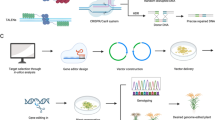Abstract
Tomato genome sequencing has been taking place through an international, 10-year initiative entitled the “International Solanaceae Genome Project” (SOL). The strategy proposed by the SOL consortium is to sequence the approximately 220 Mb of euchromatin that contains the majority of genes, rather than the entire tomato genome. Tomato and other Solanaceae plants have unique developmental aspects, such as the formation of fleshy fruit, not afforded by Arabidopsis or rice. Divergent phenotypes and habitats of the Solanaceae also make the family an ideal model to explore the bases of diversification and adaptation. Current progress in genome sequencing, genetic and genomic resources, and functional genomics approaches for tomato is summarized. Given the foreseen wealth of information in the upcoming genome sequence, the role of the laboratory-grown miniature tomato cultivar Micro-Tom as a valuable functional genomics tool for plant pathology and emerging areas of biology, such as “omics” biology, is emphasized.
Similar content being viewed by others
Author information
Authors and Affiliations
Corresponding author
Rights and permissions
About this article
Cite this article
Shibata, D. Genome sequencing and functional genomics approaches in tomato. J Gen Plant Pathol 71, 1–7 (2005). https://doi.org/10.1007/s10327-004-0150-7
Received:
Accepted:
Issue Date:
DOI: https://doi.org/10.1007/s10327-004-0150-7




